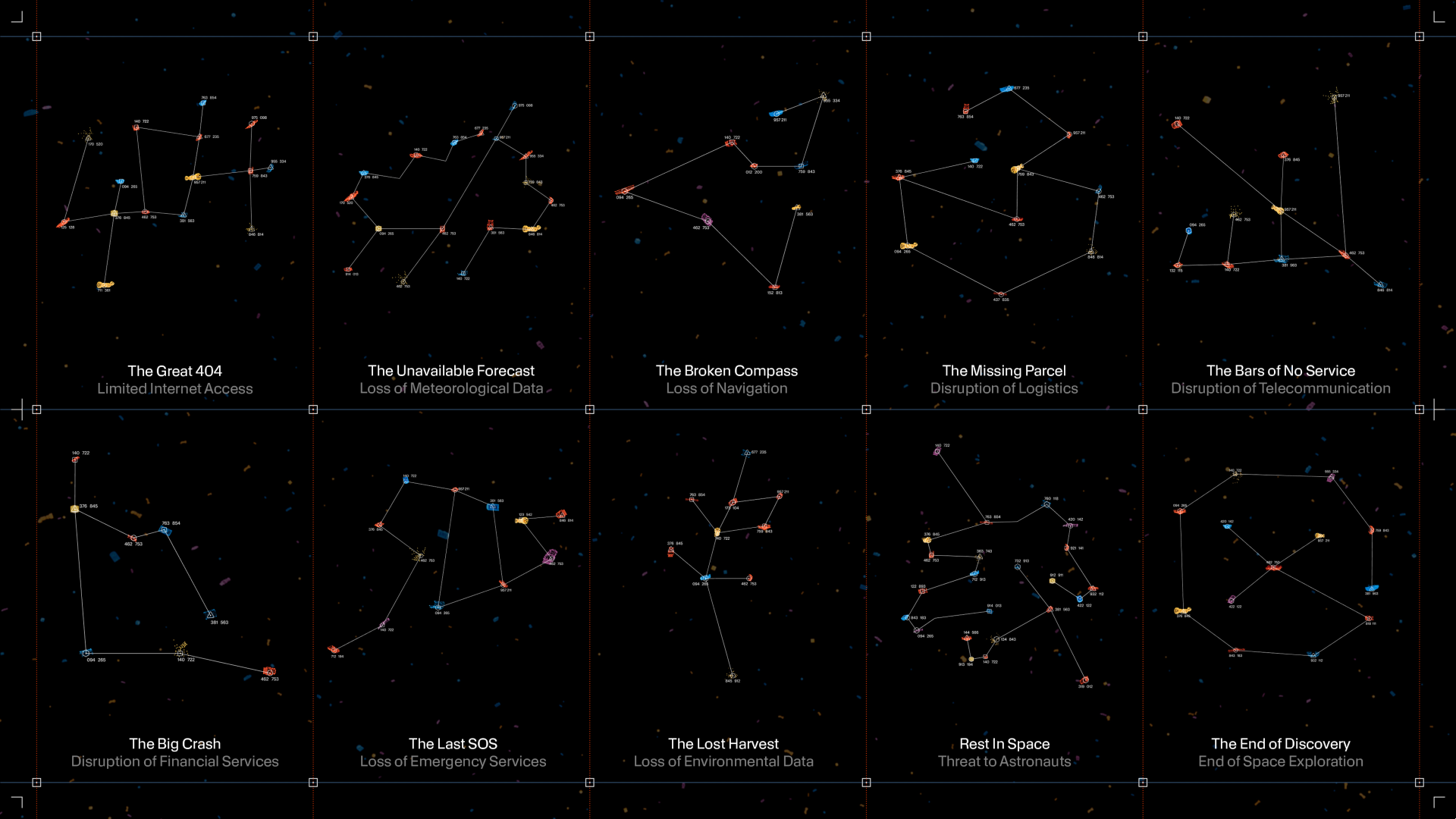Space Trash Signs project creates debris 'constellations' to highlight space junk problem (video)
The Space Trash Signs project has created "constellations" made of defunct satellites and old rocket parts to draw attention to the worsening space debris problem.
New "star signs" have been identified above Earth made of defunct satellites and old rocket parts to draw attention to the worsening space debris problem.
Called Space Trash Signs, the project is a result of a collaboration between space sustainability company Privateer, German design agency Moby Digg, visual artist Frank Gräfe and communication agency Serviceplan Innovation. The space trash constellations can be explored on a dedicated website, in star-gazing apps and in a special program shown in planetariums worldwide.
The goal of the project is to draw attention to the growing problem of space debris ahead of a meeting of the United Nations Committee of the Peaceful Uses of Outer Space in June, which will discuss measures needed to keep space around Earth in order, the authors said in a statement.
Related: 6 types of objects that could cause space debris apocalypse

The constellations were put together based on real space debris tracking data collected by Privateer, but unlike their better-known stellar constellations, these can't be observed from Earth. In fact, the constellations each only existed for one short moment as space debris orbits Earth at speeds of over 17,000 mph (27,359 kilometers per hour).
AI was used to find patterns in Privateer's data, and the constellations were then timestamped to mark the moment in which they were discovered, the project's spokesperson told Space.com in an email.
Clicking on every node of every constellation reveals information about the debris object that makes up the node including its size range, name and the expected cost of its removal from orbit.
Get the Space.com Newsletter
Breaking space news, the latest updates on rocket launches, skywatching events and more!
The constellations were selected to highlight the most devastating consequences of the space debris problem. For example, the Broken Compass, spotted above Bermuda in January 2023, points to the damage that space junk could cause to global positioning and navigational satellites such as the U.S. GPS or European Galileo systems if it were to hit them.
Similarly, The Great 404 — captured above West Africa in February 2023 — signifies the repercussions of the destruction of internet-beaming satellites that connect isolated communities worldwide. The Unavailable Forecast, captured above India in April 2023, is a symbol of the uncertainty the world would face if it were to lose its meteorological satellites. Overall, ten constellations make up the collection.
"There are some internationally agreed upon guidelines on debris clean-up and prevention, but none of these mechanisms has enforceability," Moriba Jah, Privateer's chief scientist, said in the statement. "If we don't change our behavior, space will become unusable."
Currently, more than 160 million pieces of human-made space debris orbit Earth. These objects range from entire old satellites and used rocket stages to tiny fragments produced in collisions between larger objects. Due to the growing numbers of satellites in orbit, spurred by the advent of small satellites and internet-beaming constellations such as SpaceX's Starlink, the risk of orbital collisions is steeply rising.
While satellites can maneuver using their thrusters and prevent collisions, the larger problem is that the positions and trajectories of smaller debris pieces are not known, and their impacts frequently come as a complete surprise.
Experts worry that without preventive measures — such as the removal of larger pieces of debris — space around Earth could become completely unusable. The growing frequency of collisions could lead to a situation known as the Kessler syndrome, first predicted by former NASA physicist Donald Kessler in the late 1970s. Kessler syndrome is essentially an unstoppable collision cascade in which fragments from every new collision cause further impacts, producing more fragments and more collisions.
Join our Space Forums to keep talking space on the latest missions, night sky and more! And if you have a news tip, correction or comment, let us know at: community@space.com.

Tereza is a London-based science and technology journalist, aspiring fiction writer and amateur gymnast. Originally from Prague, the Czech Republic, she spent the first seven years of her career working as a reporter, script-writer and presenter for various TV programmes of the Czech Public Service Television. She later took a career break to pursue further education and added a Master's in Science from the International Space University, France, to her Bachelor's in Journalism and Master's in Cultural Anthropology from Prague's Charles University. She worked as a reporter at the Engineering and Technology magazine, freelanced for a range of publications including Live Science, Space.com, Professional Engineering, Via Satellite and Space News and served as a maternity cover science editor at the European Space Agency.









